
Book Review: Wadi Sura – The Cave of Beasts
The name “Cave of Beasts” comes from the strange headless creatures, an example of which can be seen on the cover of the book to the left. It comprises an estimated 8000 images over an area of some 120 square metres on the northeastern edges of the vast Gilf Kebir plateau. The book is edited by the much-published and respected archaeologist Rudolph Kuper, one of the major contributors to the archaeology of the area. [more…]
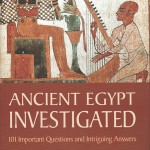
Book Review: Ancient Egypt Investigated. 101 Important Questions and Intriguing Answers
At first glance, this is a curious concept and is distinctive, when compared to other popular titles, due to its unusual premise – that ancient Egypt can be explored by asking questions rather than via chronological narrative or thematic chapters. The questions that Schneider asks are intended, the fly-leaf explains, to assist in the author’s attempts to move away from the familiar ideas perpetuated by coffee table books, art exhibitions and spectacular discoveries, towards a more modern view of Egypt that dispels “myths and inaccuracies.” [more…]
Edition - November, 2013
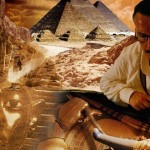
Overview of the BBC’s “Egypt – The Search for Tutankhamun”
By Andrea Byrnes and Dylan Bickerstaffe. Published on In Brief, 14th November 2013. Egypt: Series 1 – 1. The Search for Tutankhamun Part 1 of a six-part series by the BBC Director – Ferdinand Fairfax Executive Producer – Phil Dolling Series Producer – Paul Bradshaw Writer – Tony Mulholland Narrator – Andrew Sachs Described as […] [more…]

TV Write-up: Secret History – Tutankhamun, The Mystery of the Burnt Mummy
By Andrea Byrnes. Published on Egyptological, In Brief. 10th November 2013 Secret History: Tutankhamun. The Mystery of the Burnt Mummy 10th November 2013, Channel 4, 20:00 Presenter: Chris Naunton Director: Sean Smith Executive Producer: Justine Kershaw When I saw all the newspaper reports about this show, my heart sank. You can have enough […] [more…]
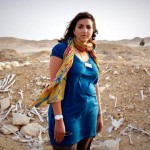
TV Write-up: Unreported World – Egypt’s Tomb Raiders
By Andrea Byrnes. Published on Egyptological, In Brief. 8th November 2013 November 8th 2013, Channel 4, 7.30pm Reporter: Aidan Hartley Director: Alex Nott Series Editor: Suzanne Lavery This evening on English television Channel 4 aired “Egypt’s Tomb Raiders” in their Unreported World series. The programme focuses on the plundering of Egypt’s heritage since the […] [more…]

Marianne Brocklehurst and the West Park Museum, Macclesfield – Part 1
Marianne Brocklehurst was the daughter of a wealthy Victorian silk manufacturer (figure 1). On the one hand she was, by all accounts, charming, bright, and full of curiosity, with a love of travel and history. She was articulate, an engaging writer and a talented painter and cartoonist. But although her portraits show a beautiful face, Marianne had side to her that was far from angelic side to her. Travelling to Egypt in the early 1870s she became a self-confessed amateur smuggler, enthusiastically joining in with the popular pastime of purchasing black-market objects to take home. [more…]
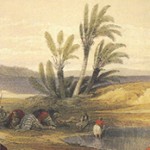
Book Review: Traveling Through the Deserts of Egypt
Traveling Through the Deserts of Egypt is a book of excerpts from the works of writers from Herodotus to modern times. The authors are the founding members of the Association for the Study of Travel in Egypt and the Near East (ASTENE) and between them have written a number of books and essays on travel writing. As one would expect with a publication from the American University in Cairo Press (AUC), the production values are excellent. [more…]
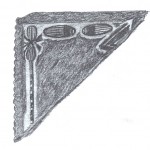
The goddess Neith in the Early Dynastic period
The goddess Neith was one of Egypt’s oldest deities, very well documented from the Early Dynastic period, when Egypt was first brought together as a unified country. She is very familiar from later periods, particularly in the New Kingdom and Third Intermediate periods (figure 1). Over the millennia she was endowed with numerous attributes: a creation goddess, a sky goddess, a protector of the king (with Isis, Nephthy and Serket), protector of one of the Four Sons of Horus, the mother of Sobek, and the consort of Seth, occasionally associated with snake, cow and pig. So where did this great deity come from? The earliest evidence to allow the formation of a coherent picture is Early Dynastic. [more…]
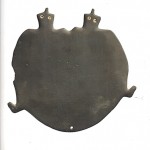
Book Review: Dawn of Egyptian Art
The United States was blessed with two exhibitions about the Predynastic in the last two years: Before The Pharaohs at the Oriental Institute in Chicago (March 29th to December 31st 2011) and Dawn of Egyptian Art at the New York Metropolitan Museum of Art (April 10th – August 5th 2012). Both museums produced books to both accompany the exhibition and serve as standalone works, edited by their curators, with contributions by a number of well-known scholars in Predynastic and Early Dynastic research. In this edition I will look at will look at Dawn of Egyptian Art. In Edition 9 I will review Before the Pharaohs. [more…]

Replicating the tomb of Tutankhamun. Conservation and sustainable tourism in the Valley of the Kings
The closure of the tomb of Tutankhamun, to be replaced by an exact facsimile, has been much reported in the UK media and highlights a number of issues and raises some interesting questions. Although this is largely a discussion about the tomb of Tutankhamun, the tomb cannot be discussed in isolation and is put into the wider context of conservation issues across the royal cemeteries of the West Bank and broader globally-relevant issues of sustainable tourism. [more…]
 By
By